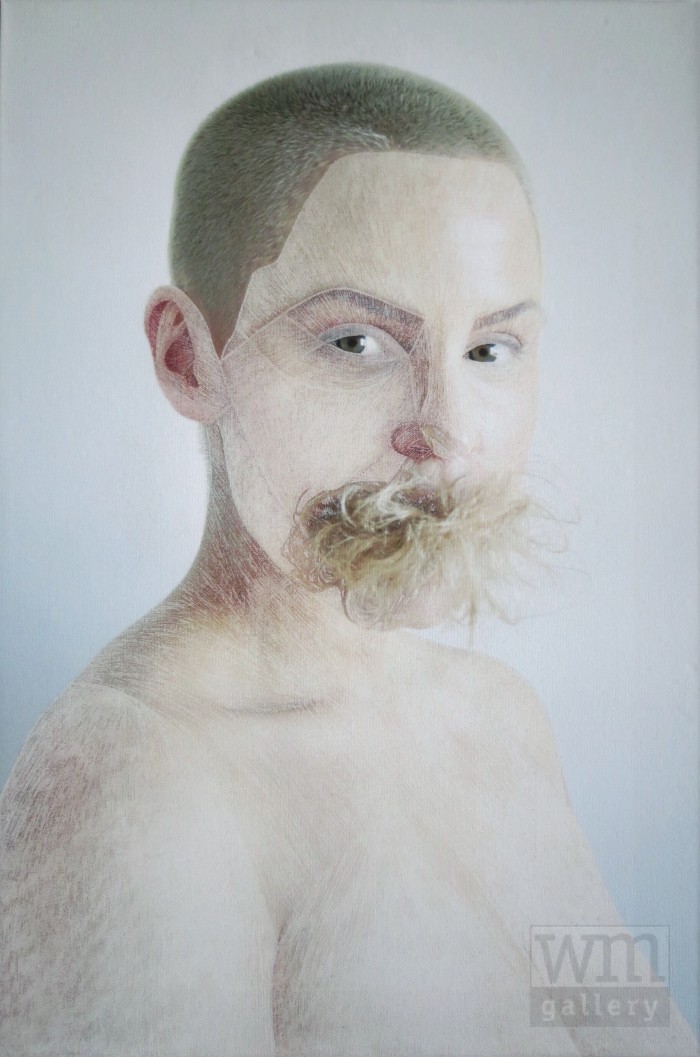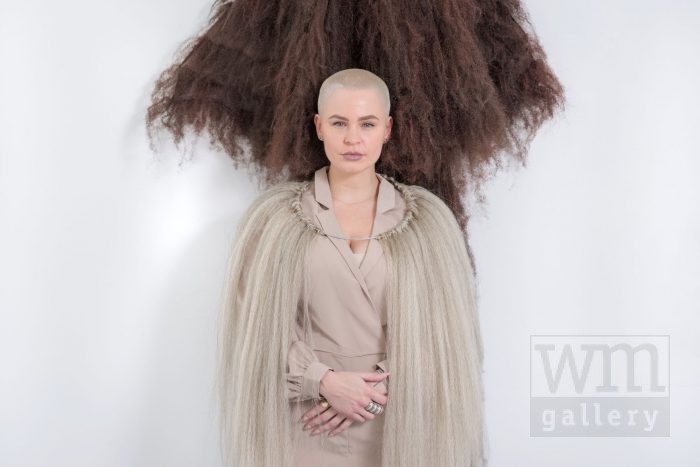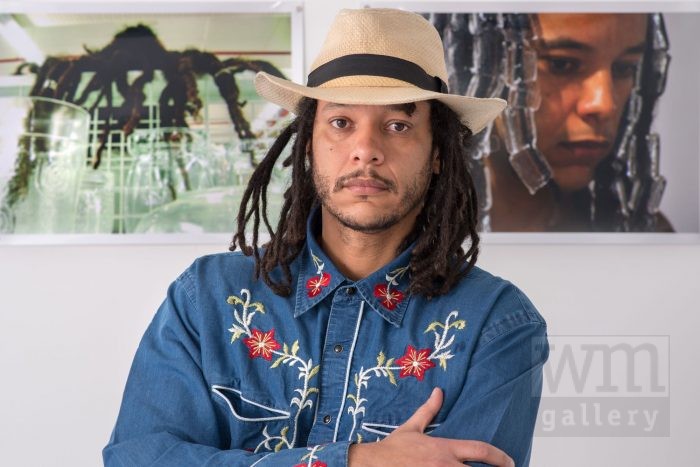Capillary Culture
January 2, 2017 8:26 pm
The Centrality of Hair by João Manoel Feliciano and Fleur Ouwerkerk
Judges 16:19– And she made him sleep upon her knees; and she called for a man, and she caused him to shave off the seven locks of his head; and she began to afflict him, and his strength went from him.
From April 1st through May 7th 2017
Opening: Saturday, April 1st 17:00-19:00 hrs.
Hair is quite probably the most significant body modification that one can do in order to express his or her identity. The way you keep your hair says a lot about the way you position yourself vis-a-vis your family, the larger group, sub-culture, community, society or religion. It is the intersection between the private, physical Self and the social, abstract Self. Braid it, curl it, twist it or even shave it. It can be worn in dreadlocks, ducktails, crew-cuts, cow-licks or as an afro. Style it Mohawk, Iriqois or cover it with a scarf, niqaab or hijab. From simply masking grey hair to its more youthful, “original” colour, to dying it or using henna to achieve deep browns, raven blacks, chestnuts, auburns, flaming reds, bizarre blues or punk pinks.
It is not so much the physiological structure, natural colour or thickness of one’s hair that interests artists João Manoel Feliciano and Fleur Ouwerkerk, but the style in which one chooses to carry it. It is the conscious – oftentimes considerable – effort that one invests in the presentation, upkeep and continuous reinvention of one’s identity through hair-stylisation. Hair styles are thus one of our most basic and direct artistic interventions in the presentation of Self, be it in terms of gender, sexual, racial, cultural, religious or individual identification.
Feliciano and Ouwerkerk have taken it upon themselves to explore the unique manner in which hair is used and abused, employed and negated, in the quest for identity, at both the intimate, private level, as well as the social level, where hair becomes the embodiment of body politics.
More to follow, check out the updates on this special show!
João Manoel Feliciano is a Spanish – Brazilian artist, active both in Europe and Brazil, currently based in Madrid. Feliciano’s diverse body of work ranges from traditional media of drawing, painting, to process-oriented, videos and photography or time-based “action” art, The performances and videos are usually of long duration, function as a ritual and often circulate around his hair as a theme.
Conceptually, Feliciano suggests that hair exercises an undeniable effect (on both the artist and the audience) when it takes on psychological, social, racial and/or political subjects. In addition, some of his works incorporate animals, bones and especially organic, common materials as well as references to trees or anything that has had profound personal meaning and in some manner expose Feliciano’s life trajectory. Recurring motifs in his works suggest that art, the hair mythology, organic materials, and one’s “everyday life” are ultimately inseparable.
Feliciano’s background and cultural heritage is evident in his work since mostly he presents it with self-portraits or in combination with his hair in relation to other objects, creating dialogues within his human-intellectual trajectory. This is especially true since his home-town Recife, in Brazil, (a town founded by the Dutch and built and shaped by the mestizo people) to his current home base, Madrid, where Feliciano finished his master’s degree in art therapy. The thesis was on how the concept of space can help in social integration of adolescents’ immigrants of Muslim origin.
Fleur Ouwerkerk graduated in 2011 at the HKU (Hogeschool voor de Kunsten Utrecht) with a Bachelor of Fine Art.
Ouwerkerk combines her art with working in fashion, the fashion industry and fashion aesthetics. She has worked, among others, for Dutch Fashion Designer Ilja Visser. The manner in which she presents herself to the real and digital world is a cross-pollination of both fashion and art. These two fields also interplay inspiration-wise, as pertains to her approach in creative expression.
Her work consists of mostly portraits, having started with primarily making self-portraits. As such, she feels affiliated to the chameleon, that paragon of camouflage, because of its abilities to transform.
In her art she deploys her ‘hard to categorize’-look for transforming into something/somebody else:
“If I change my look, I feel different, as if I become somebody else.
I like to become somebody else every now and then.”
Nowadays Ouwerkerk challenges herself to create the feel or image she intended with a suitable model, somebody other than herself.
Ouwerkerk searches for the propinquity of identity and looks. In her work she combines different techniques; mixed media. Most of her works are a combination between photography and drawing, and every once in a while she creates a 3D object. Ouwerkerk is interested in human behaviour, ethnicity and eccentricity. These interests are the main subject for her visual search and results.
“During my Bachelor of Fine art, I wrote my thesis about how the beauty of women is intertwined with having long hair. In my art I use hair a lot, both human as well as synthetic. I’ve woven hair to 3-dimensional objects, which were worn on the human body. This moment was then captured by photography or used in performances.
(My) Hair is a very important part of my life, which is kind of funny for somebody that has so very little of it.”

(c) Fleur Ouwerkerk
The artists and their works by Peter Purnell

Fleur Ouwerkerk 2017, photo by Pete Purnell

Joâo Manoel Feliciano 2017, photo by Pete Purnell
